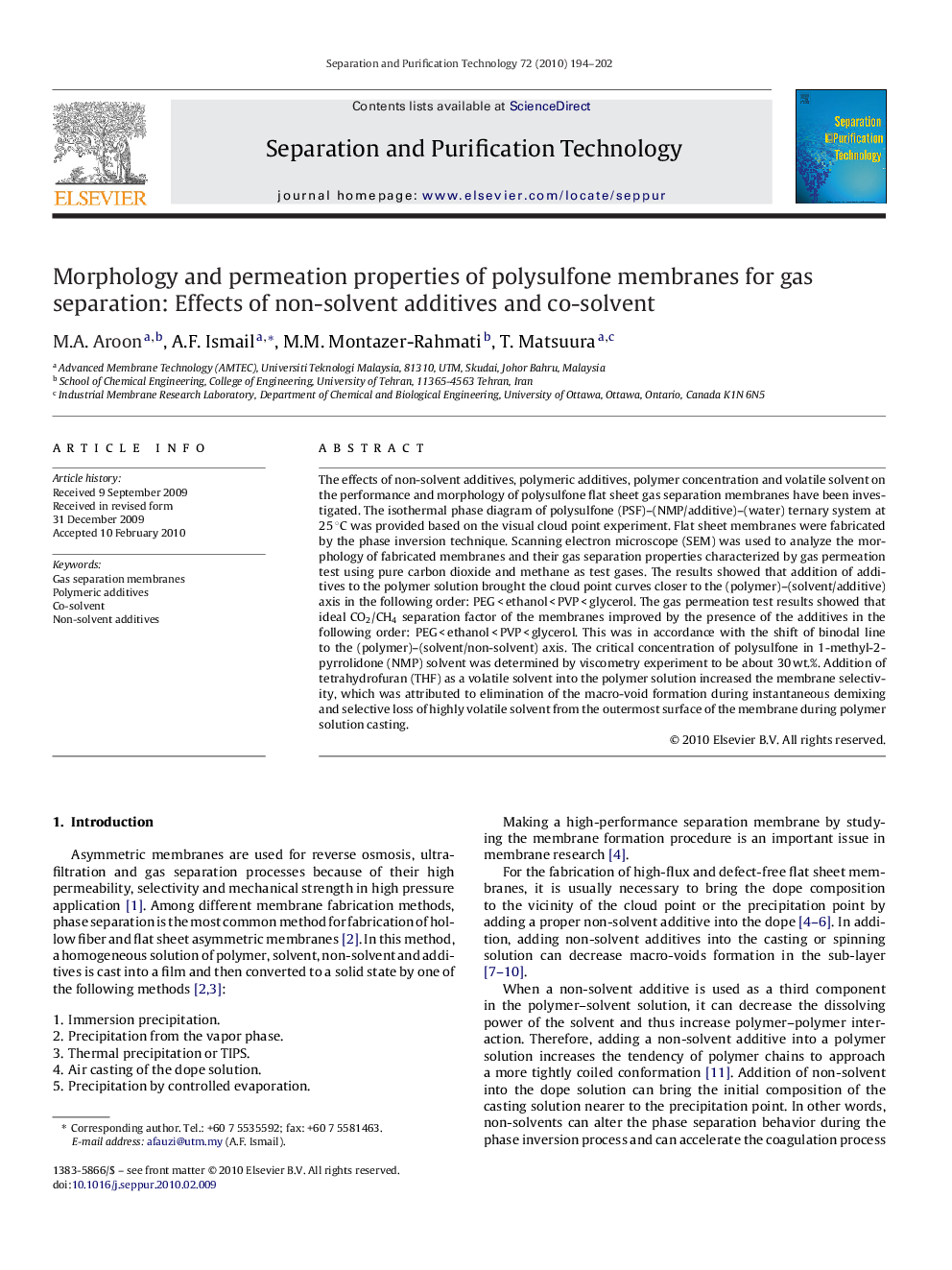| Article ID | Journal | Published Year | Pages | File Type |
|---|---|---|---|---|
| 642805 | Separation and Purification Technology | 2010 | 9 Pages |
Abstract
The effects of non-solvent additives, polymeric additives, polymer concentration and volatile solvent on the performance and morphology of polysulfone flat sheet gas separation membranes have been investigated. The isothermal phase diagram of polysulfone (PSF)-(NMP/additive)-(water) ternary system at 25 °C was provided based on the visual cloud point experiment. Flat sheet membranes were fabricated by the phase inversion technique. Scanning electron microscope (SEM) was used to analyze the morphology of fabricated membranes and their gas separation properties characterized by gas permeation test using pure carbon dioxide and methane as test gases. The results showed that addition of additives to the polymer solution brought the cloud point curves closer to the (polymer)-(solvent/additive) axis in the following order: PEG < ethanol < PVP < glycerol. The gas permeation test results showed that ideal CO2/CH4 separation factor of the membranes improved by the presence of the additives in the following order: PEG < ethanol < PVP < glycerol. This was in accordance with the shift of binodal line to the (polymer)-(solvent/non-solvent) axis. The critical concentration of polysulfone in 1-methyl-2-pyrrolidone (NMP) solvent was determined by viscometry experiment to be about 30 wt.%. Addition of tetrahydrofuran (THF) as a volatile solvent into the polymer solution increased the membrane selectivity, which was attributed to elimination of the macro-void formation during instantaneous demixing and selective loss of highly volatile solvent from the outermost surface of the membrane during polymer solution casting.
Related Topics
Physical Sciences and Engineering
Chemical Engineering
Filtration and Separation
Authors
M.A. Aroon, A.F. Ismail, M.M. Montazer-Rahmati, T. Matsuura,
